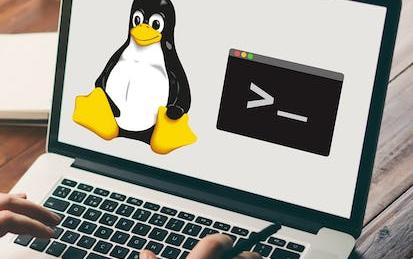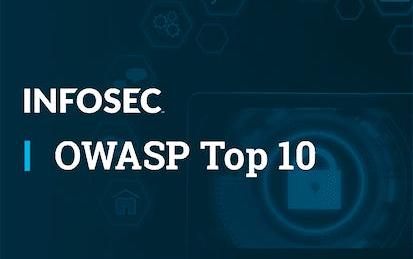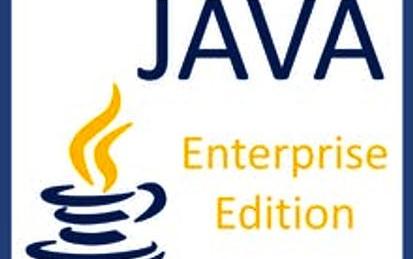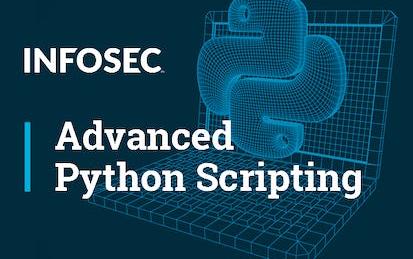

Our Courses

Introduction to Microsoft Azure Cloud Services
Whether you're just beginning to work with the cloud or you already have cloud experience and are new to Microsoft Azure, this course provides you with everything you need to get started. It introduces you to Microsoft Azure core concepts and services. You’ll learn the basics of cloud computing, its advantages, and how to choose the right Microsoft Azure solution for different business scenarios. You’ll use the Microsoft Azure portal and a sandbox to create and test Microsoft Azure resources at no cost to you.
-
Course by

-
 Self Paced
Self Paced
-
 10 hours
10 hours
-
 English
English

Hands-on Introduction to Linux Commands and Shell Scripting
This course provides a practical understanding of common Linux / UNIX shell commands. In this beginner friendly course, you will learn about the Linux basics, Shell commands, and Bash shell scripting. You will begin this course with an introduction to Linux and explore the Linux architecture. You will interact with the Linux Terminal, execute commands, navigate directories, edit files, as well as install and update software. Next, you’ll become familiar with commonly used Linux commands.
-
Course by

-
 Self Paced
Self Paced
-
 27 hours
27 hours
-
 English
English

Troubleshooting and Debugging Techniques
In this course, we'll give you the tools to quickly identify and solve real-world problems that you might come across in your IT role. We'll look at a bunch of different strategies and approaches for tackling the most common pitfalls of your code and IT infrastructure. You'll learn strategies for approaching almost any technical problem and then see how those apply to solving different real-world scenarios. We picked examples that include general system issues, issues with software that someone else wrote, and issues with programs that we wrote.
-
Course by

-
 Self Paced
Self Paced
-
 16 hours
16 hours
-
 English
English

Design Computing: 3D Modeling in Rhinoceros with Python/Rhinoscript
Why should a designer learn to code? As our world is increasingly impacted by the use of algorithms, designers must learn how to use and create design computing programs. Designers must go beyond the narrowly focused use of computers in the automation of simple drafting/modeling tasks and instead explore the extraordinary potential digitalization holds for design culture/practice. Structured around a series of fundamental design problems, this course will show you Python code in terms of its rules and syntax, and what we can do with it in its application and design.
-
Course by

-
 Self Paced
Self Paced
-
 27 hours
27 hours
-
 English
English

Bring Your Story to Life - Video Post-Production
In this course, we will explore the power and artistry of picture and sound editing. Although you’re welcome to use the editing software of your choice, we’ll be demonstrating non-linear editing using Adobe Premiere. We’ll share with you our editing workflow for completing a visual story, from scripting and writing conversationally to the visuals, to recording voice overs, to building the rough cut, and polishing with the final cut.
-
Course by

-
 Self Paced
Self Paced
-
 9 hours
9 hours
-
 English
English

Penetration Testing, Incident Response and Forensics
This course gives you the background needed to gain Cybersecurity skills as part of the Cybersecurity Security Analyst Professional Certificate program.
You will learn about the different phases of penetration testing, how to gather data for your penetration test and popular penetration testing tools. Furthermore, you will learn the phases of an incident response, important documentation to collect, and the components of an incident response policy and team. Finally, you will learn key steps in the forensic process and important data to collect.
-
Course by

-
 Self Paced
Self Paced
-
 15 hours
15 hours
-
 English
English

Using Python to Interact with the Operating System
This course is designed to explore how to execute Python locally and organize and use code across different Python files. Learners will learn how to read and write different types of files, use subprocesses and input streams, create Bash scripts, and use regular expressions. This course also covers automatic testing and explains how to set up a developer environment on a personal machine. We’ll kick off by exploring how to execute Python locally, and organize and use code across different Python files.
-
Course by

-
 Self Paced
Self Paced
-
 26 hours
26 hours
-
 English
English

PHP Tutorial
Start learning PHP with the w3schools course to improve your Web Development skills. PHP is a server scripting language, and a powerful tool for making dynamic and interactive Web pages. PHP is a widely-used, free, and efficient alternative to competitors such as Microsoft's ASP. This is a structured and interactive version of the w3schools PHP Tutorial. The course is self-paced with text based modules, practical interactive examples and exercises to check your understanding as you progress. W3schools is the world's largest web developer learning site.
-
Course by

-
 Self Paced
Self Paced
-
 5 hours
5 hours
-
 English
English

Diseña juegos en Unity: muestra la salud de tu personaje
Tomando como base un proyecto de juego de plataformas en Unity 3D profundizaremos sobre las distintas formas en que nuestros videojuegos pueden comunicar la salud del personaje principal para luego implementarlas en Unity mediante scripting en C#.
-
Course by

-
 Self Paced
Self Paced
-
 2 hours
2 hours
-
 Spanish
Spanish

OWASP Top 10 - 2021
In this learning path, we will look at the OWASP organization and what its purpose is. We will then examine Broken Access Control, Cryptographic Failures, Injection Attacks, Insecure Design and Security Misconfiguration. We’ll use demos, graphics and real-life examples to help you understand the details of each of these risks. We will then examine Vulnerable and Outdated Components, Identification and Authentication Failures, Software and Data Integrity Failures, Security Logging and Monitoring Failures, and Server-Side Request Forgery (SSRF).
-
Course by

-
 Self Paced
Self Paced
-
 English
English

Aruba Network Automation Basics
Aruba networking technologies are purpose-built with automation in mind to meet the increasing demands on IT’s ability to achieve business outcomes more efficiently. In Aruba Network Automation Basics you'll get an introduction to network automation concepts, key automation tools including Python
and Ansible, and how to apply network automation in practice with Aruba products. This course is great for the networking professionals who want an introduction to the world of coding, scripting, and automation.
-
Course by

-
 Self Paced
Self Paced
-
 3 hours
3 hours
-
 English
English

Linux Tools for Developers
Course 3 is a continuation of the previous course, and will focus on teaching you how to work with tools you need to do your everyday work. The course begins by introducing you to numerous essential command line tools that are used daily. Then, it focuses on bash scripting - you will learn how to construct scripts and how to do very complicated tasks in an automated way. The course looks at files and filesystems and focuses on compiling programs in Linux, using gcc and other compilers, and using libraries of different types.
-
Course by

-
 Self Paced
Self Paced
-
 15 hours
15 hours
-
 English
English

Introduction to Python Scripting for DevOps
This course is the first course in a series that aims to prepare you for a role working as a programmer. In this course, you will be introduced to the five main concepts in procedural programming: user input, console output, variable declaration and assignment, decision branching and iteration. Labs will allow you to apply the material in the lectures in simple computer programs designed to re-enforce the material in the lesson.
-
Course by

-
 Self Paced
Self Paced
-
 18 hours
18 hours
-
 English
English

Python Scripting: Dates, Classes and Collections
This course is the second course in a series that aims to prepare you for a role working as a programmer. In this course, you will be introduced to the four main concepts in programming: Advanced String Operations and Dates, Modeling Classes, Development of Classes and Collections. Labs will allow the students to apply the material in the lectures in simple computer programs designed to re-enforce the material in the lesson.
-
Course by

-
 Self Paced
Self Paced
-
 15 hours
15 hours
-
 English
English

Sass Tutorial
Learn how to write efficient and modular CSS code with Sass, a popular preprocessor scripting language. Our course covers Sass fundamentals such as variables, nesting, partials, and mixins, as well as advanced features like functions, loops, and conditional statements. Improve your workflow, reduce code size, and manage complex projects with Sass. Enroll now and become a Sass pro! The course is self-paced with text based modules, practical interactive examples and exercises to check your understanding as you progress. W3schools is the world's largest web developer learning site.
-
Course by

-
 Self Paced
Self Paced
-
 4 hours
4 hours
-
 English
English

Python Scripting: Files, Inheritance, and Databases
This course is the third course in a series that aims to prepare you for a role working as a programmer. In this course, you will be introduced to the three main concepts in programming: Files, Inheritance and external libaries. Labs will allow the students to apply the material in the lectures in simple computer programs designed to re-enforce the material in the lesson.
-
Course by

-
 Self Paced
Self Paced
-
 13 hours
13 hours
-
 English
English

Linux Commands & Shell Scripting
This mini-course describes shell commands and how to use the advanced features of the Bash shell to automate complicated database tasks. For those not familiar with shell scripting, this course provides an overview of common Linux Shell Commands and shell scripting basics.
-
Course by

-
 Self Paced
Self Paced
-
 English
English

Introduction to Java as a Second Language
This course is meant to be an introduction to Java as a second language, if you are familiar with any computer programming language. It could be shell scripting, knowledge of older Java versions, JavaScript, etc. This course will allow you to quickly pick up the Java programming language. You will learn Java Object Orientation, and see the parallels with other programming paradigms. This is course 1 of a 3 course Specialization titled Java as a Second Language.
-
Course by

-
 Self Paced
Self Paced
-
 7 hours
7 hours
-
 English
English

Complex Retrieval Queries in MySQL Workbench
In this intermediate-level course you will use MySQL Workbench to expand your basic SQL query-writing skills with more complex examples and activities. In hands-on activities in MySQL Workbench, you will write and execute SQL queries that retrieve data from multiple tables. In addition, you will generate queries that summarize data and perform calculations. Nested queries and SQL scripting rounds out the course content.
-
Course by

-
 Self Paced
Self Paced
-
 3 hours
3 hours
-
 English
English

Java Enterprise Edition
This Specialization is intended for intermediate learners that have some knowledge of Java who are seeking to continue developing skills with Java Enterprise Edition (EE). Through four courses, we will cover everything from web basics and the building blocks of the internet, to Servlet lifecycles and session management, to scripting elements and Java Beans. These skills will prepare you to perform Enterprise-level Java development.
-
Course by

-
 Self Paced
Self Paced
-
 English
English

Introduction to Scripting in Python
Developed by Rice University's world-class Computer Science & Data Science faculty, this specialization is intended for beginners who would like to master essential programming skills. Through four courses, you will cover key programming concepts in Python 3 which will prepare you to use Python to perform common scripting tasks. This knowledge will provide a solid foundation towards a career in data science, software engineering, or other disciplines involving programming.
-
Course by

-
 Self Paced
Self Paced
-
 English
English

IBM Back-End Development
Prepare for a career in the high-growth field of software development.
-
Course by

-
 Self Paced
Self Paced
-
 English
English

Java as a Second Language
This specialization is meant to be an introduction to Java as a second language. You may be familiar with any computer programming language, shell scripting, or knowledge of older Java versions, JavaScript, etc. This specialization will help you move to the Java language and will cover all the features and functions you need to create great Java web and mobile applications.
-
Course by

-
 Self Paced
Self Paced
-
 English
English

Advanced Python Scripting for Cybersecurity
Python is one of the most popular and widely-used programming languages in the world, due to its high usability and large collection of libraries. This learning path provides an application-driven introduction to using advanced Python features for offensive and defense cybersecurity. This path demonstrates how some of the advanced functionality in Python packages can be applied to cybersecurity and how to automate multi-stage attack chains and defensive operations using Python.
-
Course by

-
 Self Paced
Self Paced
-
 English
English

Introduction to Machine Learning: Supervised Learning
In this course, you’ll be learning various supervised ML algorithms and prediction tasks applied to different data. You’ll learn when to use which model and why, and how to improve the model performances. We will cover models such as linear and logistic regression, KNN, Decision trees and ensembling methods such as Random Forest and Boosting, kernel methods such as SVM. Prior coding or scripting knowledge is required. We will be utilizing Python extensively throughout the course.
-
Course by

-
 Self Paced
Self Paced
-
 40 hours
40 hours
-
 English
English



